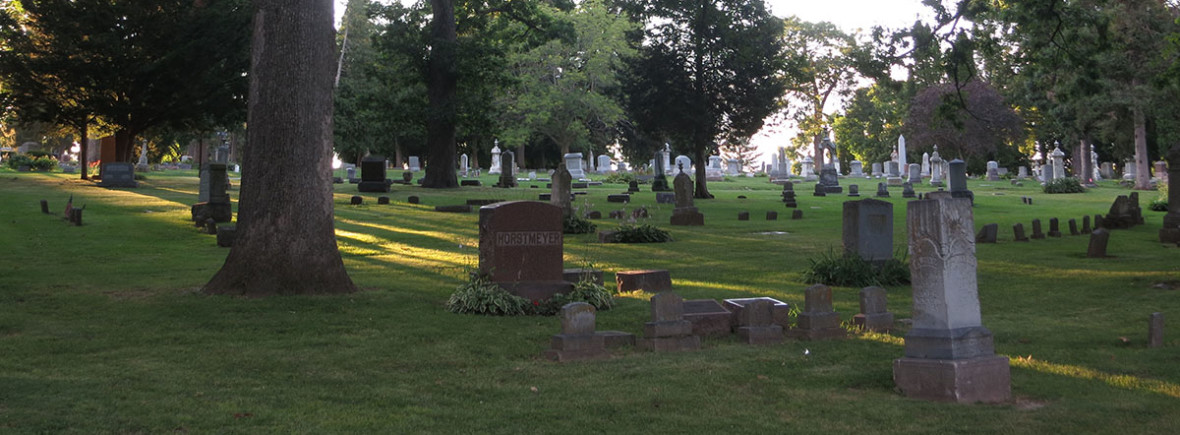First laid out in 1857-58, Forest Hill is an iconic example of a Romantic rural cemetery of the kind that became popular across the United States during the middle decades of the nineteenth century. Easily Madison’s largest and most beautiful cemetery, it serves as the final resting place for individuals and families who played vital roles in the history of the city, the university, and the state. Governors, legislators, university presidents, scholars, scientists, doctors, lawyers, business people are here in abundance, and so many more: men, women, and children representing an extraordinary range of backgrounds and ways of life.
This website is intended to enrich your visits to Forest Hill Cemetery by offering many different perspectives for understanding what you’ll find here. We offer an overview of how the cemetery was created and how it has changed across the years. We teach you how to understand the geology of the gravestones and the changing technologies used to quarry and carve them. We introduce you to the words and symbols people have used to mark these final resting places, and the very different religious and cultural traditions you’ll find expressed here. We survey the trees and plantings that are essential to conceptions of nature in a Romantic cemetery. We provide an overview of the effigy mounds that Native Americans constructed here long before Forest Hill itself was laid out. We explain the rules and regulations that mandate different kinds of burials and monuments in different parts of the cemetery. Finally, we explore the wider geography of death in Madison, Wisconsin, and the United States more generally, asking how bodies make their way to cemeteries and inquiring about the businesses and government agencies that help make that happen.
Most of all, we invite you to explore this lovely and fascinating place on your own. We hope this website will enhance your pleasure and understanding in doing so.
